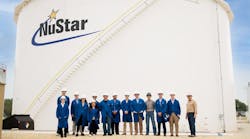External data indicated continued support for strength in heavy commercial vehicle demand, and Class 8 orders did not disappoint in November, at 40,925 units--the fifth best order month since ACT Research started collecting industry data in the early 1980s. These results were published in the latest State of the Industry report, recently released by ACT Research Co (ACT).
Kenny Vieth, ACT’s president and senior analyst, said: “Year-to-date, orders of 336,000 units are up 42.4% from last year at this time. Meanwhile, Class 8 has the largest backlog since October 2006 and, on a per day basis, November’s build was the second best since December 2006.”
Concerning medium duty demand, Vieth said, “After a strong run from August to October that was in part augmented by the annual school bus order surge, medium-duty orders pulled back in November, falling 3% year-over-year to 17,691 units.”
The report covers Classes 5 through 8 vehicles for the North American market.
Vieth also discussed the impact of changes in the Hours of Service rules contained in the omnibus spending legislation that was signed by President Obama. “Trucking lobbying interests, including the American Trucking Association and the Owner-Operator Independent Drivers Association, have successfully worked to amend the FMCSA (Federal Motor Carrier Safety Administration) Hours of Service (HOS) provisions, rolling back hours of service restart rules and directing that additional research be conducted on the issues,” Vieth said. “Our take on the outcome is that it will be a positive for driver productivity and therefore for fleet utilization--rough estimates suggest a 1% to 2% improvement in truck utilization at most.
“We calculate the net productivity drag caused by the initial July 2013 implementation of HOS rules to be in the 2% to 3% neighborhood. The estimated benefit of rollback reversal is restrained by the change in practices undertaken by motor transportation operators over the last 18 months to comply with HOS. Having incurred the transition costs to optimize to the new HOS rules, different fleet operators will likely have varied responses to the rollback. These could range from a complete return to pre-July 2013 operating modes to conformance even if not a mandated, because a change back is sub-optimal. The latter course of action makes sense especially if the further research that FMCSA is now required to conduct gives them justification to come back with re-implementation of similar rules in two or three years.
“A productivity gain of 1% to 2%, as we estimate, would ordinarily translate into a potential net loss of upwards of 15,000 to 20,000 units of Class 8 production and retail sales over a 12- to 24-month time span.”
However, these impacts are likely to be more than offset in 2015 and 2016 by the economic, freight, and energy factors at work that will bolster truck demand in those years. The results of a special analysis published for ACT Research clients earlier in December reported that the drop in per barrel crude oil prices from mid-90s to a level near $70 all by itself would add 7,000 to 10,000 units to Class 8 demand and about 15,000 trailers in each of 2015 and 2016.
So the ‘restart rollback’ is a positive for profitability, but the impact on truck productivity will not detract noticeably from the strong market levels ACT Research sees coming for the next two years.








